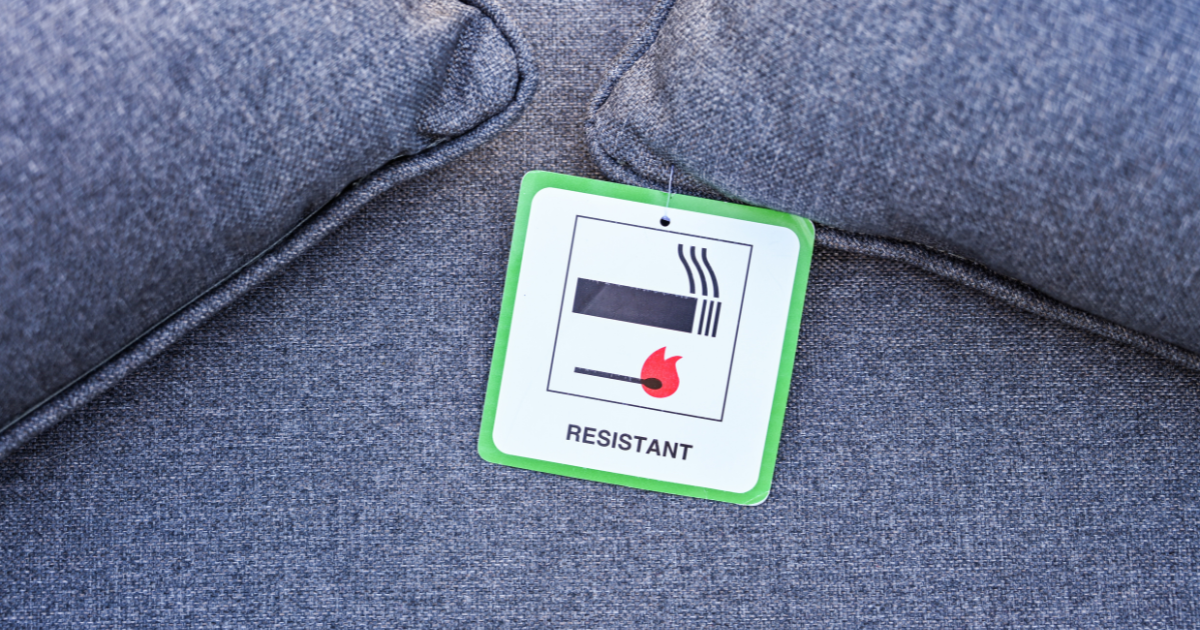What are flame retardants and how do they work?

In today’s safety-conscious world, the use of flame retardants is integral to protecting lives and property from the dangers of fire. From household items to industrial applications, these substances play a crucial role in fire prevention and safety. This article will explore the meaning of flame retardants, how they work, their applications, and the importance of using fire-resistant fabrics.
Flame retardant meaning
Flame retardants are chemicals added to materials during or after manufacture to inhibit, suppress, or delay the combustion process. They work by interfering with the various stages of combustion, including heating, decomposition, ignition, or flame spread. The term “flame retardant” refers to the function of these chemicals, not their specific composition.
How do flame retardants work?
These chemicals work through different mechanisms, depending on the type of retardant and the material it is applied to. Here are some common methods by which flame retardants achieve their purpose:
Chemical reactions
Certain compounds react chemically with the material to enhance its fire resistance. These reactions can alter the combustion process, making it more difficult for the material to ignite or sustain a flame.
Formation of a protective barrier
Some agents form a protective char layer on the material’s surface when exposed to high temperatures. This char layer acts as a barrier, preventing oxygen from reaching the underlying material and slowing the combustion process.
Release of non-combustible gases
Another mechanism involves the release of non-combustible gases, such as water vapour or carbon dioxide, which dilute the flammable gases produced during combustion. This reduces the amount of heat generated and slows down the spread of flames.
Endothermic reactions
Certain substances undergo endothermic reactions, absorbing heat from the surroundings and reducing the temperature of the material. This process helps to prevent the material from reaching its ignition point.
Examples of applications: uses of flame retardants
Fire preventive chemicals are used in a wide range of applications to enhance fire safety. Here are some examples:
Textiles and fabrics
Flame retardant fabrics are used in clothing, furniture upholstery, curtains, and carpets. These fabrics are treated with fire resistant chemicals to reduce the risk of fire and provide a higher level of safety in homes, offices, and public spaces.
Electronics
In the electronics industry, these chemicals are added to components such as circuit boards, connectors, and casings. This helps to prevent electrical fires and enhances the overall safety of electronic devices.
Building materials
Flame retardants are commonly used in construction materials, including insulation, roofing, and wall panels. These materials help to prevent the spread of fire in buildings, providing crucial time for evacuation and reducing property damage.
Automotive and transportation
These safety chemicals are essential in the automotive and transportation industries, where they are used in interior components, seat materials, and wiring insulation. This application helps to protect passengers and reduce the risk of fire in vehicles.
Plastics and polymers
In the plastics industry, flame retardants are added to various polymer products to improve their fire resistance. This includes items such as packaging materials, household appliances, and children’s toys.

The importance of flame retardants
These fire-preventive substances play a vital role in enhancing fire safety across various industries and applications. Here are some key reasons why flame retardants are important:
Life safety
By slowing down the spread of fire and providing additional time for evacuation, these chemicals help to save lives. This is particularly crucial in residential buildings, public spaces, and transportation, where large numbers of people may be at risk.
Property protection
Flame retardants help to minimise property damage by reducing the spread of flames and the intensity of fires. This is essential for protecting homes, commercial properties, and valuable assets.
Compliance with regulations
Many industries are subject to strict fire safety regulations and standards. The use of flame retardants ensures compliance with these regulations, helping businesses avoid legal and financial repercussions.
Environmental considerations
Modern flame retardants are designed to be more environmentally friendly, reducing the release of harmful substances such as dioxins and furans. This helps to mitigate the environmental impact of fire retardant chemicals and promotes sustainable safety solutions.
Why choose a flame retardant fabric?
Choosing fire-resistant fabrics is essential for enhancing fire safety in both personal and professional settings. Here are some key benefits of using these fabrics:
Enhanced safety
Flame retardant fabrics significantly reduce the risk of fire-related injuries and fatalities by providing an additional layer of protection. They are designed to resist ignition and prevent the spread of flames, ensuring a higher level of safety for occupants.
Durability and longevity
These fabrics are often more durable and long-lasting compared to untreated materials. They maintain their fire-resistant properties even after multiple washes and extended use, providing reliable protection over time.
Versatility
Fire-resistant fabrics are available in a wide range of styles, colours, and textures, making them suitable for various applications. Whether used in clothing, furniture, or industrial settings, these fabrics offer both safety and aesthetic appeal.
Compliance with safety standards
Using these fabrics ensures compliance with fire safety regulations and standards. This is particularly important in industries such as hospitality, healthcare, and transportation, where stringent safety requirements must be met.
In conclusion, flame retardants are essential for enhancing fire safety across a wide range of applications. By understanding the meaning of flame retardants, how they work, and their importance, individuals and businesses can make informed decisions to protect lives and property. Choosing fire-resistantflame retardant fabrics, such as those offered by Dabedan, provides a reliable and effective solution for reducing fire risks and ensuring safety.
Subscribe to our newsletter
Receive all communications in your email to stay up to date with our news, as well as news and advice about the sector.
Latest published articles
Do you need advice?
We collaborate with you to develop custom designs tailored to the needs of each project, creating the fabric according to aesthetic, quality, or usage requirements.
Get in touch with us, and we will advise you on our products, or request a free sample.




